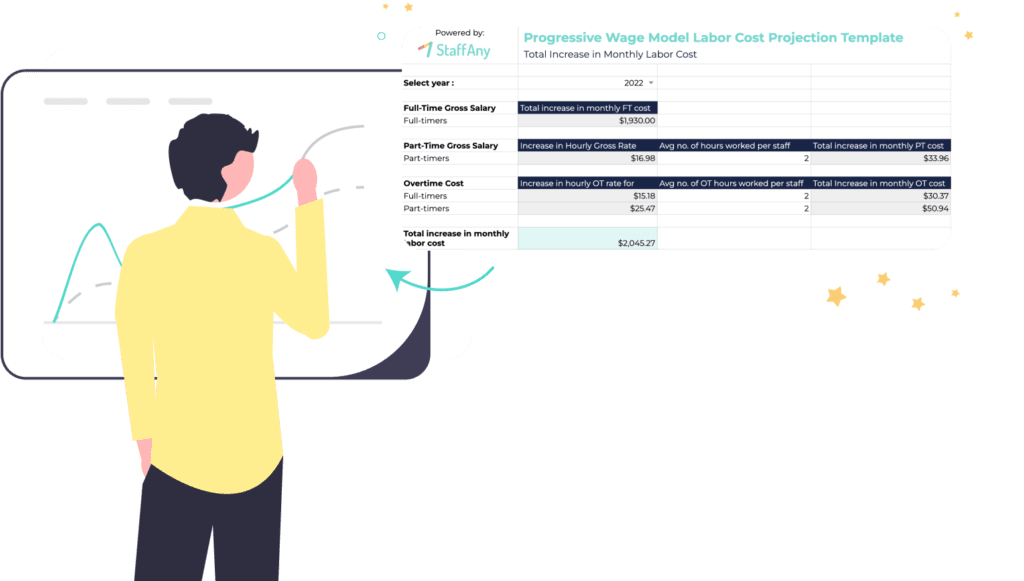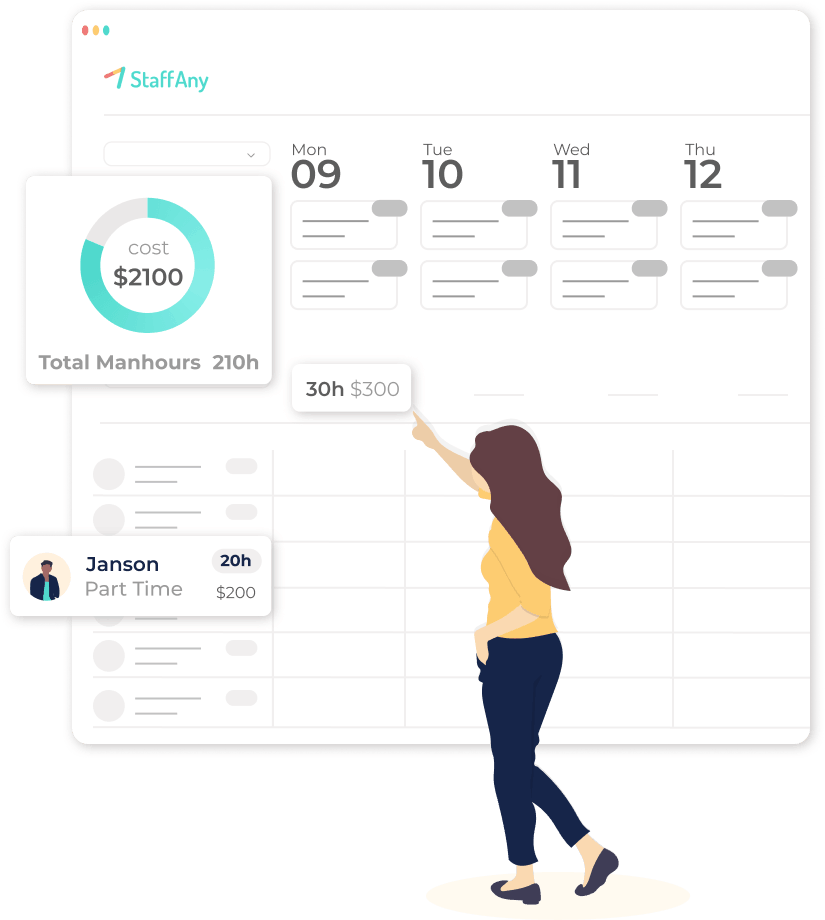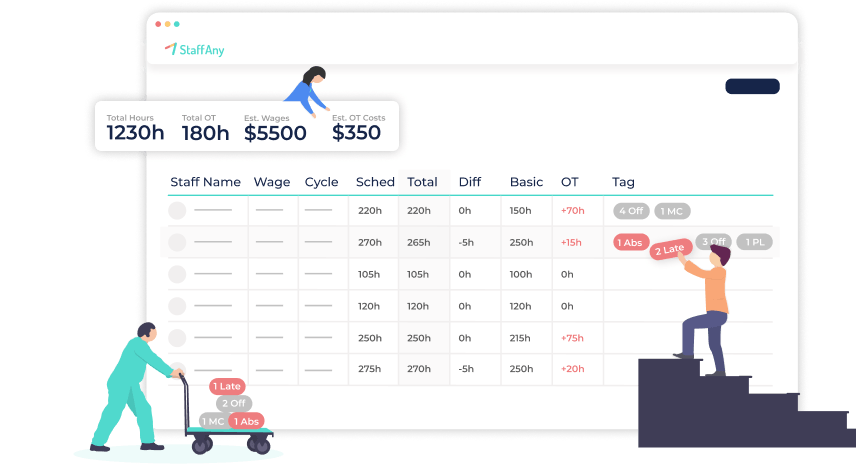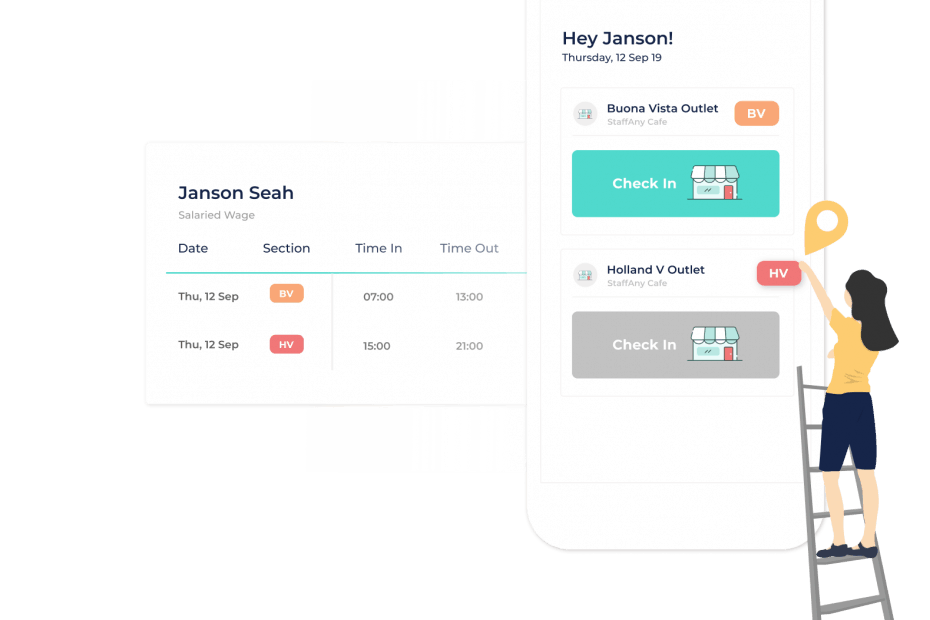The First Labor Cost Projection Template For Progressive Wage Model by StaffAny
Use our Template for Progressive Wage Model (PWM) – The first of its kind in Singapore to easily calculate and project your labor costs and how it affects your company revenue in advance, so you can be ready when the Progressive Wage Model (PWM) rollout begins in March 2023.
Home » Free Resource Tools » Progressive Wage Model Template – PWM | StaffAny

How Can Our Template Help You?
1. Set your operational strategies faster than other businesses.
2. Get a head start in manpower planning and costing with Singapore’s first PWM labor cost template. Download the Template Today!
Did you know?
StaffAny has helped companies across multiple countries in several other ways.

Cost Optimization
Up to $24K annual labor cost savings

Time Savings
50% faster timesheet consolidation

Punctuality
For Owner/ HRs Who Want Better Cost Control


Time Tracking Made Easy
Modern Time and Attendance software with features that empowers you with real-time visibility and decision-making abilities, resulting in efficiency, cost savings and faster timesheet consolidation, as much as 50% faster.
More Punctuality, Increasing Efficiency and Better Control

Frequently Asked Questions
The Progressive Wage Model (PWM) helps to increase the wages of workers through upgrading skills and improving productivity.
It’s developed by tripartite committees consisting of unions, employers and the government. Since being implemented, PWM sectors have raised wages at a sustainable and meaningful pace without hurting the livelihoods of the lower-wage workers.
To effectively use the Excel file template and to calculate the estimated labor costs for full-time and part-time employees, you will need to enable macros. If you don’t, you will not be able to switch years to view year-on-year labor cost projections. Otherwise, we recommend use the Google Sheets template instead.
The PWM requirements cover all Singapore citizens and permanent residents who are:
1. Full-time or part-time employees in Food Service job roles on a contract of service, and
2. Employed by firms which hire foreign workers, regardless of whether the firm is classified under the Food and Beverage Singapore Standard Industrial Classification (SSIC) or another SSIC.
3. PWM will cover job roles such as Food Preparation and Wait Staff, Cook/ Senior Cook and Team Leader/ Assistant Supervisor/ Supervisor. There will also be minimum employee training requirements, such as Food Hygiene certification.
You can choose one or the other, but they have differing pros and cons.
For example, an increase in staff’s base wage leads to a corresponding increase in the overtime rate of each employee and the employer’s CPF, which results in higher costs. However, the base wage remains competitive in the industry, which will benefit your company in the long run.
On the other hand, if you decide to increase your employee allowance, you will incur lower short-term costs. However, your company will suffer compared to others offering attractive long-term pay.






